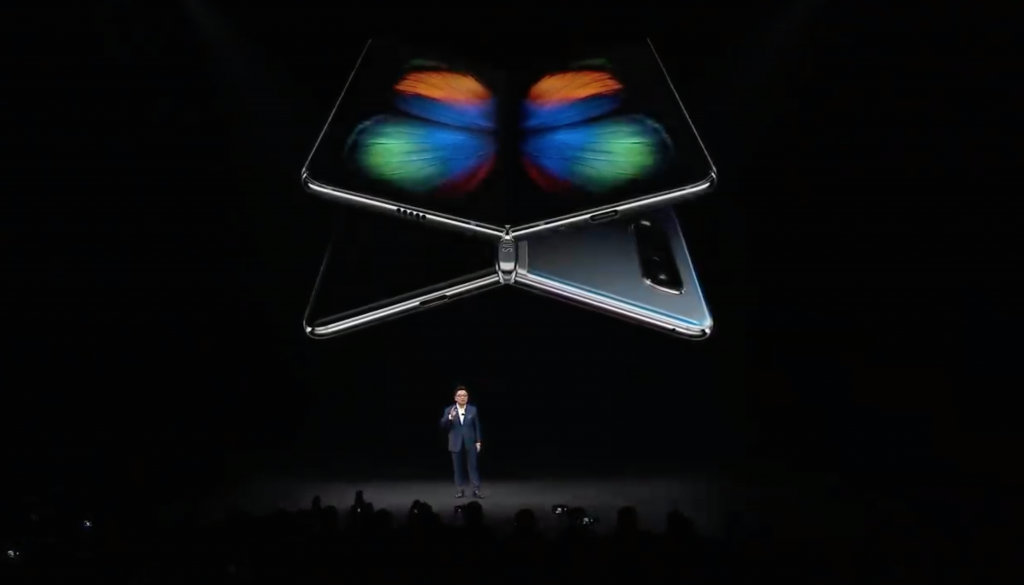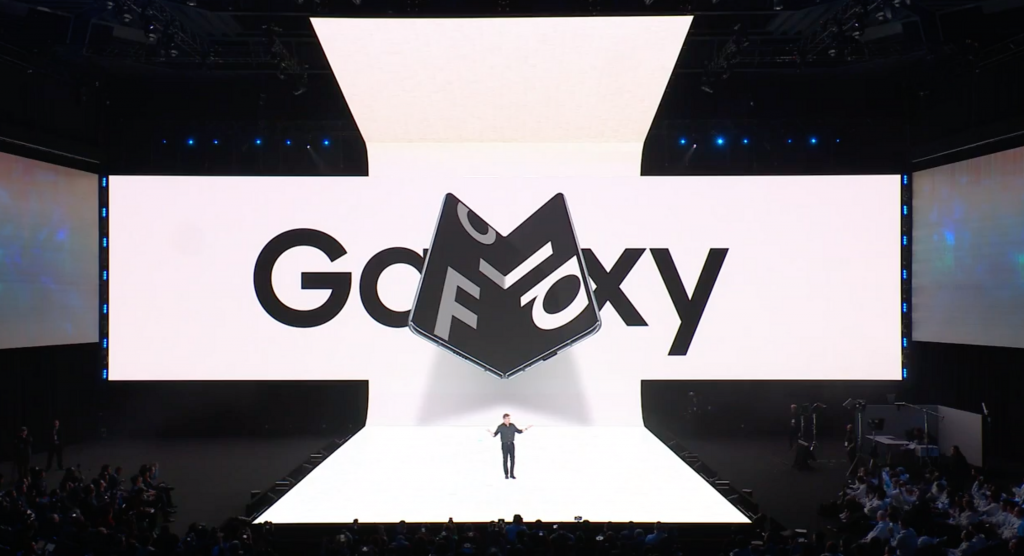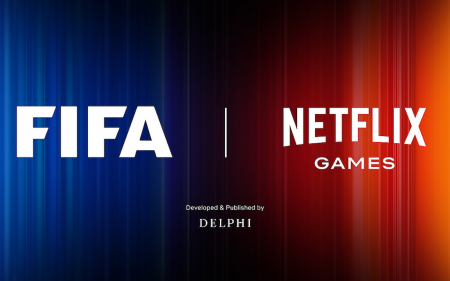Samsung this week announced it’s delaying the commercial release of its Galaxy Fold device after a number of US reporters experienced problems with their review devices. The company was meant to host a local reveal event tonight, with the first units set to reach South African buyers on 9 May. In the US, meanwhile, the first devices were set to go on sale this week. That’s not going to happen now, and while Samsung’s to be lauded for addressing the problem promptly, it shouldn’t have needed to.
Sure, the concept of having a phone-and-tablet (phonelet, tabphone?) is fantastic and futuristic, but only if it provides as good a user experience as one could get from a standalone version of each… or something very closely approximating it. On that front, the Galaxy Fold was compromised from the outset. We got a little hands-on time with the Fold at the South African launch event for the S10 range (but weren’t allowed to take pictures of video of the device) and found the outer, 4.3in display not just small by today’s standards, but the bezels surrounding it comically (and, frankly, unacceptably) huge. Then there was the unmistakable crease in the middle of the interior, 7.3in OLED display.
During the preview session we were assured that the crease would be gone in the final production units… but reading some of the early reviews from last week, it’s clear Samsung failed to deliver on that promise. Not that rival Huawei has done much better, so far. Though Huawei’s sensibly held off on committing to a release date for its Mate X — saying only that it’ll come sometime around mid-2019 — it’s been similarly reluctant to let the press actually touch the device (probably thanks to accounts of the hinge feeling crackly and overly firm). Also, despite having half the number of cameras and displays at the Galaxy Fold, the Mate X is slated to cost $2,600 (~R37,000 before taxes). Yikes.
 We don’t know what local pricing for the Galaxy Fold was going to come out at, but considering a straight conversion of the $1,980 price tag is R28,000 using today’s exchange rate, and allowing for import duties, ad valorem taxes and a markup for a little bit of profit, a final price of R35,000 is probably still on the conservative side. For the same money you could buy the 512GB version Samsung’s own Galaxy S10+ (R24,000), and one of Apple’s new, 5th-gen iPad minis (prices start from R7,500) — because, let’s be frank, very few people who want a tablet want one from Samsung — and still have R4,500 leftover to spend on accessories.
We don’t know what local pricing for the Galaxy Fold was going to come out at, but considering a straight conversion of the $1,980 price tag is R28,000 using today’s exchange rate, and allowing for import duties, ad valorem taxes and a markup for a little bit of profit, a final price of R35,000 is probably still on the conservative side. For the same money you could buy the 512GB version Samsung’s own Galaxy S10+ (R24,000), and one of Apple’s new, 5th-gen iPad minis (prices start from R7,500) — because, let’s be frank, very few people who want a tablet want one from Samsung — and still have R4,500 leftover to spend on accessories.
A bit of gloom, but not doom
That’s not to say folding devices are doomed. On the contrary, Samsung and Huawei’s folding phones are the most exciting devices we’ve seen in the mobile technology sector in years. The US pre-orders Samsung received combined with the hype surrounding both it and its Chinese nemesis’s foldables, make it clear that demand is not a problem. What is a problem is the rush to release products that are half-baked.
As we argued in February, “In their endless game of oneupmanship, where first to market is better than ready for market, Samsung and Huawei are essentially asking the well-heeled to help them beta test their new wares.” Debris under the screen is going to be a problem when there’s a gap between the internal, bendable display and the hinge. And that’s not going to be revealed in clinical-condition stress tests. Meanwhile, peeling off what looks like a protective layer for shipping shouldn’t destroy a nearly-$2,000 device.
Yes, it’s great that Samsung’s learnt from the Note 7 debacle and responded swiftly to the problems with the Fold, but it’s alarming it didn’t pick up the problems ages ago. One would think the company would’ve rigorously tested the device in real-world conditions — and mimicked worst-case scenarios of them — before sending out review units. That so many review units developed problems demonstrates the perils early adopters face where the prestige of being first to “innovate” often trumps less sexy and headline-grabbing practicalities like quality control.
 Having a premium device fail so speedily and publicly makes Samsung look sloppy… which it isn’t. The S10 smartphone range is one of the finest high-end Android offerings out there. The recently revealed A series, meanwhile, includes an ingenious rotating camera setup that does double duty as primary and selfie shooter, and its TVs remain the best-selling in our market. But in coming weeks that’s all going to take a backseat to the Fold’s very public early failure.
Having a premium device fail so speedily and publicly makes Samsung look sloppy… which it isn’t. The S10 smartphone range is one of the finest high-end Android offerings out there. The recently revealed A series, meanwhile, includes an ingenious rotating camera setup that does double duty as primary and selfie shooter, and its TVs remain the best-selling in our market. But in coming weeks that’s all going to take a backseat to the Fold’s very public early failure.
Best beats first
Folding phones are definitely going to come to market eventually, and as the largest manufacturer of smartphones on earth, you can bet Samsung will be at the forefront. But instead of trying to pip rival Huawei to the post (the Chinese company is no doubt taking this opportunity to identify and iron our its own, inevitable problems with the Mate X), Samsung should focus on ensuring its bleeding-edge tech matches the same standards its existing lineup promises, otherwise it risks eroding the — generally deserved — faith consumers place in it.
Samsung’s mea culpa in the wake of the Note 7 debacle worked. Consumers forgave Samsung and it continues to sell phones hand over fist. But another high-profile failure only a few years later paints the Korean electronics behemoth in an awful light. In its race to be the first Samsung forgot the far more attractive proposition of being the best.
With pre-orders that need to be honoured and who-knows-how-many Folds already built, packaged and dispatched, Samsung’s either going to have to find elegant workarounds for the current problems the existing Fold faces, or spend a fortune scrapping it and starting again. Either way, it’s not a good look for the world’s leading smartphone maker. Apple, which is one of Samsung’s biggest customers for screens but usually waits until the kinks are ironed out of new hardware developments before adopting them, must be feeling pretty smug right now.
This article first appeared in Financial Mail




